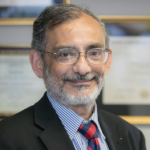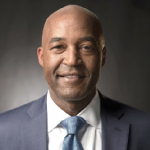People News July 2019
Subha Chakraborti
For the past 35 years, University of Alabama professor of statistics and Morrow Faculty Excellence Fellow Subha Chakraborti has traveled the world researching and developing new theories and methods in statistics and its applications. Chakraborti’s contributions to the field have earned him many prestigious awards, recognitions, and elite organization invitations. Now, they have earned him one more: the Burnum Distinguished Faculty Award.The Burnum Distinguished Faculty Award is one of the university’s highest honors for a faculty member and is awarded to one recipient annually to recognize and promote excellence in research, scholarship, and teaching.
Chakraborti’s focus has been on statistical application in nonparametric statistics, where decisions are made without referring to a distribution, such as the bell curve. He has played a key role in developing the niche area of nonparametric statistical quality control—developing methods of making things better by improving the monitoring of processes.
He has coauthored a book on the topic, Nonparametric Statistical Inference, that’s gone through five editions, and he just published another book, Nonparametric Statistical Process Control, that he coauthored with one of his former doctoral students from South Africa—a country Chakraborti visited as a Fulbright Fellow in 2004.
Though citing how his research has been specifically used to affect practical application is difficult due to the proprietary nature of the information, the field of quality control methods has changed the face of many industries in the past 75 years, from manufacturing to surveillance to disease monitoring.
“There’s a difference between my line of work and someone, say, in engineering, who might build something and show it saying, ‘Look, here’s what I’ve done,’” Chakraborti said. “Our work is methodological, using mathematics, more theory, computers, that one could use to improve processes. But clearly, in small measures over time, we get to see a return on how our work has helped.”
“There are industries that are using some of this work to make their processes more efficient, and that’s one way how we get to see how this research is used,” Chakraborti continued. “The Six Sigma, for example, uses statistical quality control technology to reduce variation. If you can reduce variation, you can make a better product.”
The Burnum recipient must have demonstrated superior scholarly or artistic achievements and a profound dedication to the art of teaching, all of which bring distinctive credit to the academic community in general and to The University of Alabama in particular, according to the Burnum website.
“The selection committee was impressed that he is a fellow of the American Statistical Association, which is an honor awarded to less than 1% of the association’s thousands of members,” Carvalho said. “The committee was also impressed by his international recognition and the global partnerships that his work has brought to The University of Alabama. That’s really what made him stand out amongst all of the nominees.”
Read more about Chakraborti and the award on The University of Alabama’s website.
F. DuBois Bowman
F. DuBois Bowman, dean of the University of Michigan School of Public Health, presented the 14th annual Donna J. Brogan Lecture in Biostatistics April 15 to a large audience at the Rollins School of Public Health at Emory University.Bowman began his academic career as an assistant professor of biostatistics at Emory in 2000, was promoted through the ranks to full professor, and then moved to Columbia University in 2013 to chair the biostatistics department. In 2018, he moved to Ann Arbor to assume his current position.
Bowman’s talk was titled “Precision Discovery of Neuroimaging Biomarkers for Parkinson’s Disease.” He summarized the natural progression of this complex neurodegenerative disorder, emphasizing the presumed delay between disease incidence and the observable onset of hallmark motor symptoms. His research focuses on using newly developed statistical methods to analyze noninvasive neuroimaging data to identify biomarkers that will detect PD much earlier than is possible today.
Bowman concluded his presentation by expressing his gratitude to Donna Brogan for her activities over many years in advancing careers for women in statistics. He included in his slides the following quote from an invited talk Brogan gave at a recent Women in Statistics and Data Science Conference: “I hope that some of my personal and group efforts to combat sex discrimination in employment, education, and civic life have contributed in some small way to the larger and ongoing goal of equal rights and opportunities for girls and women in this country.”



















